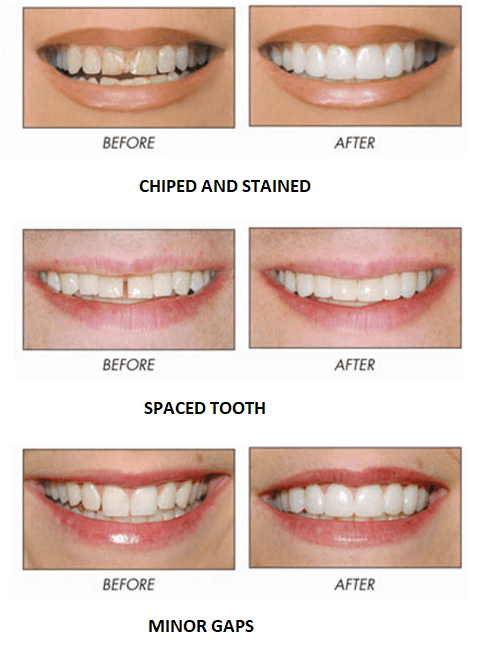
Dental bonding, a popular cosmetic dentistry procedure, effectively addresses issues like chipped or discolored teeth. The key concern for many is its natural appearance. The procedure involves using a color-matched composite resin, ensuring a seamless blend with natural teeth. Skilled dentists sculpt and shape the resin, then harden it with special light, resulting in a durable and natural-looking bond. Worries about an obvious or artificial appearance can be alleviated, as dental bonding, when done correctly, provides not only functional but also beautifully natural and harmonious smiles, making it a reliable option for enhancing the aesthetics of misaligned, stained, or chipped teeth.

Does Dental Bonding Look Natural?
Dental bonding is a popular cosmetic dental procedure that can help enhance the appearance of your teeth. It involves the use of a tooth-colored resin material that is bonded to the teeth to improve their shape, size, and color. One common concern that people have when considering dental bonding is whether it will look natural. In this article, we will explore the natural look of dental bonding and provide you with all the information you need to make an informed decision.
In conclusion, dental bonding can indeed look natural when performed by a skilled dentist. The resin material used in bonding can be color-matched to your natural teeth, providing a seamless blend. With the right dentist and proper care, dental bonding can enhance your smile while maintaining a natural appearance. If you are considering dental bonding, consult with a qualified dentist to explore if it is the right option for you. Remember, a beautiful smile is just a bonding away!
Key Takeaways: Does Dental Bonding Look Natural?
- Dental bonding can look natural when done by a skilled dentist.
- The color of the bonding material can be matched to your natural teeth.
- Proper shaping and contouring help create a natural-looking result.
- Dental bonding can improve the appearance of chipped, cracked, or discolored teeth.
- Regular dental maintenance is important to keep your bonded teeth looking natural and healthy.
Frequently Asked Questions
Dental bonding is a popular cosmetic dental procedure that aims to improve the appearance of teeth by applying a tooth-colored resin material to the affected area. Many people wonder if dental bonding looks natural and if it is a good option for achieving a seamless smile. In this article, we will address some common questions related to the natural appearance of dental bonding.
1. How natural does dental bonding look?
When done by a skilled dentist, dental bonding can look remarkably natural. The resin material used in dental bonding is carefully matched to the color of your teeth, ensuring a seamless blend with your natural tooth structure. The dentist will also shape and polish the bonded area to mimic the texture and shine of your natural teeth. With proper care and maintenance, dental bonding can provide a long-lasting and natural-looking result.
However, it’s important to note that the final outcome of dental bonding depends on several factors, including the skill of the dentist, the quality of the materials used, and the condition of your teeth. It’s always best to consult with a qualified dentist to determine if dental bonding is the right option for you.
2. Can dental bonding fix chipped or cracked teeth?
Yes, dental bonding is an effective treatment for repairing chipped or cracked teeth. The resin material used in dental bonding can be molded and shaped to fill in the gaps and restore the natural appearance of the tooth. The bonding material also helps to strengthen the tooth structure, providing added support and protection.
It’s important to note that while dental bonding can fix minor chips and cracks, more severe cases may require alternative treatments such as dental crowns or veneers. Your dentist will assess the extent of the damage and recommend the most suitable treatment option for you.
3. Will dental bonding stain or discolor over time?
One concern some people have about dental bonding is its susceptibility to staining or discoloration. While the resin material used in bonding is resistant to stains, it is not entirely immune. Over time, bonding material may accumulate surface stains from certain foods, beverages, and habits like smoking.
To minimize the risk of staining, it’s important to maintain good oral hygiene practices such as regular brushing, flossing, and professional dental cleanings. Additionally, avoiding or limiting the consumption of staining substances like coffee, tea, and red wine can help preserve the natural appearance of dental bonding.
4. Can dental bonding be used to close gaps between teeth?
Yes, dental bonding can be used to close small gaps between teeth, offering a conservative and cost-effective alternative to orthodontic treatments. The dentist will apply the resin material to the sides of the teeth, building them up to close the gaps and create a more harmonious smile.
It’s important to note that while dental bonding can address minor gaps, larger gaps or more complex orthodontic issues may require orthodontic treatment such as braces or clear aligners. Your dentist will evaluate your specific case and recommend the most suitable treatment option for achieving the desired results.
5. How long does dental bonding last?
The lifespan of dental bonding can vary depending on various factors such as oral hygiene practices, biting forces, and the location of the bonded area. On average, dental bonding can last between 5 to 10 years with proper care.
To ensure the longevity of dental bonding, it’s important to maintain good oral hygiene practices and avoid habits that can damage the bonded area, such as biting on hard objects or using your teeth as tools. Regular dental check-ups are also essential for monitoring the condition of the bonding and addressing any issues that may arise.
Overall, dental bonding can provide a natural-looking and durable solution for improving the appearance of teeth. Consult with a qualified dentist to determine if dental bonding is the right option for you and to receive personalized advice based on your specific dental needs.
Dental Bonding vs. Veneers – EXPLAINED! | Smile Solutions Dentistry | Dentist in Harrisburg, NC
Final Summary: Dental Bonding – A Natural and Beautiful Solution
Call or Book appointment online
:Ace Dental Care Alpharetta office: 678-562-1555 - Book Now
Ace Dental Care Norcross office: 770-806-1255 - Book Now
Disclaimer
This blog post was generated by artificial intelligence. The content of this post may not be accurate or complete, and should not be relied upon as a substitute for professional advice. If you have any questions about the content of this post, please contact us.
We are constantly working to improve the accuracy and quality of our AI-generated content. However, there may still be errors or inaccuracies. We apologize for any inconvenience this may cause.





